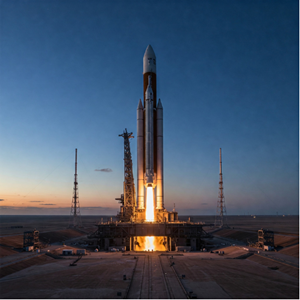Select Your Region
Specifying Grease and Oil for Reactive Gas Environments

In production environments where reactive gases, like oxygen, chlorine, fluorine, and ammonia, are present, even trace impurities in lubricants can lead to catastrophic results. By their very nature, these gases are prone to violent reactions with hydrocarbons, esters, silicones, and many common base oils. For plant maintenance and safety professionals, this poses a significant challenge: how do you ensure equipment reliability and process uptime without introducing risk through incompatible lubrication?
The answer lies in the chemical inertness of Krytox™ performance lubricants.
Manufactured by Chemours and distributed by ChemPoint, Krytox™ oils and greases are based on perfluoropolyether (PFPE) chemistry—a fully fluorinated structure that is fundamentally nonreactive. This inertness is what enables Krytox™ to deliver exceptional performance in the most hazardous environments on Earth.
Reactive gases pose unique risks because of their high oxidizing potential, corrosive behavior, and reactivity with organic materials. Conventional lubricants fail in these environments for various reasons. In high-pressure or high-temperature service, even low-volatility hydrocarbon lubricants can vaporize or oxidize, creating ignition sources in the presence of reactive gases. Worse, many synthetic lubricants marketed as high performance fail oxygen compatibility testing or do not have appropriate ASTM or ISO safety ratings for reactive gas environments.
Manufactured by Chemours and distributed by ChemPoint, Krytox™ oils and greases are based on perfluoropolyether (PFPE) chemistry—a fully fluorinated structure that is fundamentally nonreactive. This inertness is what enables Krytox™ to deliver exceptional performance in the most hazardous environments on Earth.
Why Reactive Gases Demand Absolute Lubricant Inertness
Reactive gases pose unique risks because of their high oxidizing potential, corrosive behavior, and reactivity with organic materials. Conventional lubricants fail in these environments for various reasons. In high-pressure or high-temperature service, even low-volatility hydrocarbon lubricants can vaporize or oxidize, creating ignition sources in the presence of reactive gases. Worse, many synthetic lubricants marketed as high performance fail oxygen compatibility testing or do not have appropriate ASTM or ISO safety ratings for reactive gas environments.
The Krytox™ Advantage: PFPE Chemistry for Extreme Chemical Compatibility
Krytox™ lubricants are composed entirely of carbon, fluorine, and oxygen—elements that are already highly oxidized and chemically stable. As a result, they resist degradation from the following:
- Oxygen at pressures greater than 3,000 psi (207 bar)
- Chlorine, fluorine, and other halogens
- Acids and bases
- Radiation and vacuum environments


This stability is not hypothetical—it is validated. Krytox™ lubricants meet or exceed the following industry standards:
- ASTM D2512: Demonstrating thermal and oxidative stability
- ASTM G72/ASTM D2863: Measuring oxygen index and compatibility
- MIL-PRF-27617: Military performance specification for oxygen-safe lubricants
- BAM Certification (Federal Institute for Materials Research and Testing – Germany): Validates nonflammability and oxygen compatibility up to 200 bar and 60°C
These certifications make Krytox™ lubricants the industry standard for oxygen systems, cleanroom processing, semiconductor manufacturing, chlorine transport systems, and more.
Maintenance and safety managers turn to Krytox™ when failure is not an option. Common applications include the following:
In each of these applications, Krytox™ lubricants not only prevent reactivity but also deliver exceptional longevity, reducing maintenance intervals and improving total equipment effectiveness (OEE).
In oxygen-enriched systems (e.g., LOX production or cylinder filling plants), hydrocarbon lubricants are prohibited due to ignition risk. Krytox™ lubricants—especially Krytox™ NRT series greases—are formulated specifically for nonreactivity in high-pressure oxygen environments.
Application Areas in Reactive Gas Handling Facilities
Maintenance and safety managers turn to Krytox™ when failure is not an option. Common applications include the following:
- Cylinder valves and gas manifold seals
- Regulators and pressure relief valves
- O-ring and gasket lubrication (without elastomer degradation)
- Pump bearings and mechanical seals
- Rotary compressors and turboexpanders used in gas liquefaction
In each of these applications, Krytox™ lubricants not only prevent reactivity but also deliver exceptional longevity, reducing maintenance intervals and improving total equipment effectiveness (OEE).
Case Example: Oxygen Service Lubrication
In oxygen-enriched systems (e.g., LOX production or cylinder filling plants), hydrocarbon lubricants are prohibited due to ignition risk. Krytox™ lubricants—especially Krytox™ NRT series greases—are formulated specifically for nonreactivity in high-pressure oxygen environments.
These greases have passed BAM oxygen compatibility testing and are used globally in these applications:
- NASA and aerospace launch systems
- Medical gas valves
- Industrial air separation units

Failure in these systems could mean loss of life, not just loss of product. Krytox™ eliminates lubricant compatibility as a variable.
While Krytox™ lubricants come at a premium compared to conventional greases, the risk mitigation is unmatched:
The cost of even a single failure in these environments—from a seized valve to an ignition event—far outweighs the incremental cost of Krytox™. When weighed against insurance, regulatory, and operational risks, Krytox™ is not just a safer choice—it is the most economical one long term.
In reactive gas environments, safety is not a feature—it is a requirement. Krytox™ PFPE lubricants offer unmatched chemical inertness, oxygen compatibility, and thermal stability, making them the gold standard for valves, bearings, and seals operating in the most extreme chemical conditions.
If you are specifying lubrication for reactive gas service, do not compromise. Contact ChemPoint’s technical specialists today to find the Krytox™ solution that aligns with your safety, reliability, and compliance needs.
The Economic Argument: Risk Reduction Through Proper Specification
While Krytox™ lubricants come at a premium compared to conventional greases, the risk mitigation is unmatched:
- Eliminate combustion hazards in oxygen and halogen systems
- Reduce system downtime by extending relubrication intervals
- Ensure regulatory compliance (FDA, REACH, RoHS, and others)
- Protect capital equipment operating under corrosive or oxidizing loads
The cost of even a single failure in these environments—from a seized valve to an ignition event—far outweighs the incremental cost of Krytox™. When weighed against insurance, regulatory, and operational risks, Krytox™ is not just a safer choice—it is the most economical one long term.
Conclusion: Safety Does Not Tolerate Uncertainty
In reactive gas environments, safety is not a feature—it is a requirement. Krytox™ PFPE lubricants offer unmatched chemical inertness, oxygen compatibility, and thermal stability, making them the gold standard for valves, bearings, and seals operating in the most extreme chemical conditions.
If you are specifying lubrication for reactive gas service, do not compromise. Contact ChemPoint’s technical specialists today to find the Krytox™ solution that aligns with your safety, reliability, and compliance needs.

Thank you
Thank you for your inquiry and interest in ChemPoint.
We will respond to you shortly.
ChemPoint will not under any circumstances release personal user information to individuals or companies. All information collection is solely used to support ChemPoint customers service communications. Read our Privacy Notice.
Are you in the correct region?
We’ve detected that you are located in a different region than the region selected on the website. Would you like to change your region?
Current Region: English - Mexico